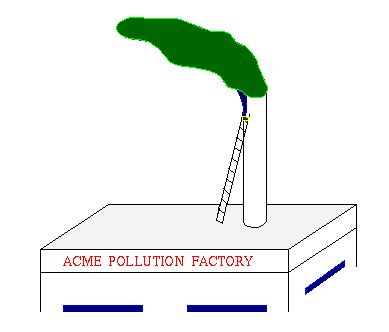For example, suppose you work for the Environmental Protection Agency (EPA) and are investigating a possible violation of the Clean Air Act. As part of your job you travel to a factory to measure the rate at which the factory is belching filth into the air.
By flashing your badge and threatening the factory manager with imprisonment, you convince the manager to allow you to climb to the top of the factory's smokestack four times during the work shift. Each time you reach the top of the smokestack, you measure the rate at which soot is emitted for one minute. After one minute, burning eyes and a hacking cough force you to climb back down to the ground level to recover from the experience.

Time Measured rate of soot
production (kg/hour)
------ -----------------------
8:00 2
10:00 3
1:00 4
5:00 1
From this data you need to know: how much soot (in kilograms) did the
factory spew into the air during the day?
Recall that derivatives are rates of change. Furthermore, the derivative and integral are inverse operations, so given the rate at which soot enters the air, we can obtain the amount of soot entering the air by integrating our rate data. A problem arrives, however, when we realize that we do not know the underlying "pollution-rate function" that determines the rate at which soot enters the air! All we have are some data points for this pollution-rate function!
Thus the purpose of this lab: how can we integrate functions that we don't know explicitly? More specifically, how can we "integrate" experimental data?
A portion of this lab is based on a problem appearing in the Harvard Consortium Calculus book, Hughes-Hallet, et al, 1994, p. 174
Last modified: Fri Jan 5 09:51:08 1996